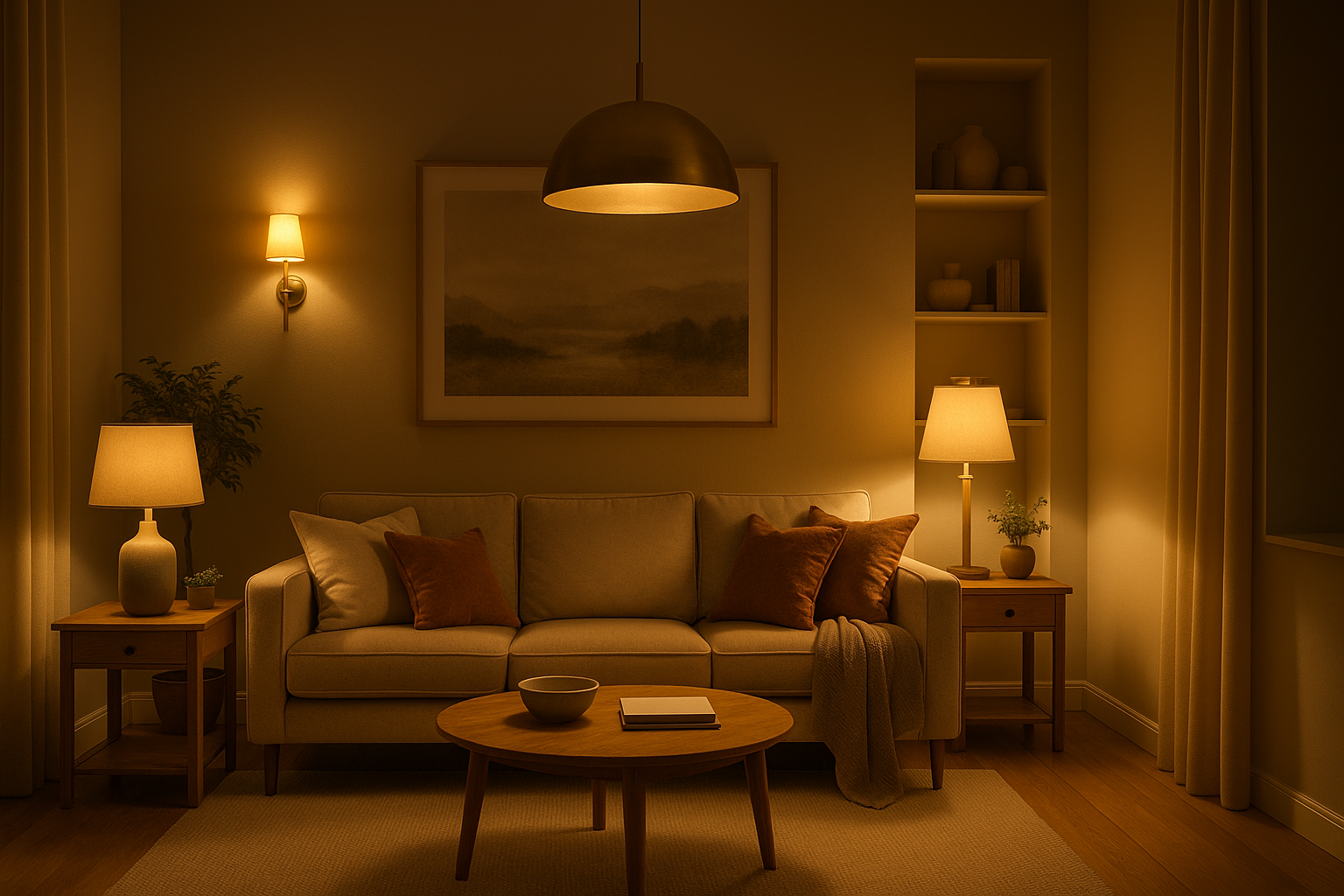Lighting does much more than brighten a room — it sets the mood, defines spaces, and enhances the overall design. Whether you’re trying to create a cozy ambiance, highlight architectural features, or make a small room feel larger, mastering lighting is essential to great home decor.
In this article, you’ll learn how to use different types of lighting to elevate your space, room by room.
1. Understand the Three Main Types of Lighting
To create balanced, functional, and beautiful interiors, combine the three key lighting types:
Ambient Lighting
Also known as general lighting — it provides overall illumination.
- Examples: ceiling lights, recessed lights, flush mounts
- Purpose: lights up the entire room
- Best for: basic visibility and structure
Task Lighting
This focuses light on specific areas where activities are performed.
- Examples: desk lamps, reading lights, under-cabinet lighting
- Purpose: helps with tasks like reading, cooking, or working
- Best for: offices, kitchens, and bedrooms
Accent Lighting
Used to highlight features and create mood.
- Examples: wall sconces, picture lights, LED strips
- Purpose: adds drama and draws attention to decor elements
- Best for: living rooms, galleries, entryways
Pro Tip: A well-designed room uses all three in layers.
2. Match Lighting to the Room’s Function
Different rooms require different lighting moods and intensities.
Living Room
- Use a central chandelier or ceiling light for ambient light.
- Add floor or table lamps for reading or conversation areas.
- Include accent lighting to highlight art or shelves.
- Use dimmers for flexibility and ambiance.
Kitchen
- Install bright, focused task lighting over counters and cooking areas.
- Use pendant lights above islands.
- Add under-cabinet lights for meal prep.
- Consider recessed lights for overall brightness.
Bedroom
- Go for warm ambient light from ceiling fixtures or lamps.
- Add task lighting on nightstands or walls for reading.
- Use indirect accent lighting to create a calm atmosphere.
- Avoid overly bright lights — prioritize softness.
Bathroom
- Use bright, shadow-free lighting around mirrors.
- Install ceiling fixtures for general light.
- Add dimmable lights or soft night lighting for relaxing baths.
Home Office
- Combine natural light with desk task lighting.
- Use overhead ambient lights to prevent eye strain.
- Consider adjustable lamps to redirect focus.
3. Choose the Right Color Temperature
Lighting color affects mood and energy. It’s measured in Kelvins (K):
- Warm White (2700K–3000K): soft, cozy, relaxing (great for living rooms and bedrooms)
- Neutral White (3500K–4100K): clean, natural light (great for kitchens and bathrooms)
- Cool White or Daylight (5000K–6500K): bright and energizing (best for offices and garages)
Rule of thumb:
Warm = relaxing
Cool = energizing
4. Use Dimmers to Control the Mood
Dimmers give you control over brightness and allow you to shift the mood throughout the day.
- Use dimmable bulbs and switches for flexibility.
- Perfect for bedrooms, dining rooms, and living areas.
- Allows one space to go from bright and productive to calm and ambient.
Smart bulbs or plugs can offer even more customizable lighting scenes.
5. Add Statement Fixtures for Style
Lighting isn’t just functional — it’s a design element.
- Use a chandelier or pendant light as a focal point.
- Try a sculptural floor lamp to add artful interest.
- Wall sconces can bring vintage, industrial, or modern charm.
- Choose fixtures that complement your room’s aesthetic.
Lighting is one of the easiest ways to express personal style.
6. Use Indirect Lighting for Soft Glow
Indirect lighting softens shadows and creates a more relaxing vibe.
- Try LED strips behind headboards, mirrors, or under shelves.
- Use backlit mirrors in bathrooms or vanities.
- Install toe-kick lighting in kitchens or hallways.
This type of lighting creates a hotel-like, modern atmosphere.
7. Don’t Forget Natural Light
Maximize daylight whenever possible.
- Use sheer curtains to let in light while maintaining privacy.
- Place mirrors opposite windows to reflect light and open up the room.
- Avoid blocking windows with large furniture or dark drapes.
Natural light not only saves energy — it boosts your mood and makes colors pop.
8. Layer Lighting for Depth
Don’t rely on a single overhead light — layer your sources.
- Combine ceiling lights, floor lamps, and table lamps.
- Spread them around the room to avoid shadows or dark corners.
- Use lights at different heights for a more dynamic space.
Layering creates depth, comfort, and balance.
Final Thoughts: Light With Intention
Good lighting is one of the most impactful — yet affordable — ways to improve your home. By mixing light types, using the right temperatures, and layering sources throughout your space, you can shape how your home looks, feels, and functions.
The right lighting doesn’t just illuminate a space — it transforms it. Design with light in mind, and your home will always shine.
